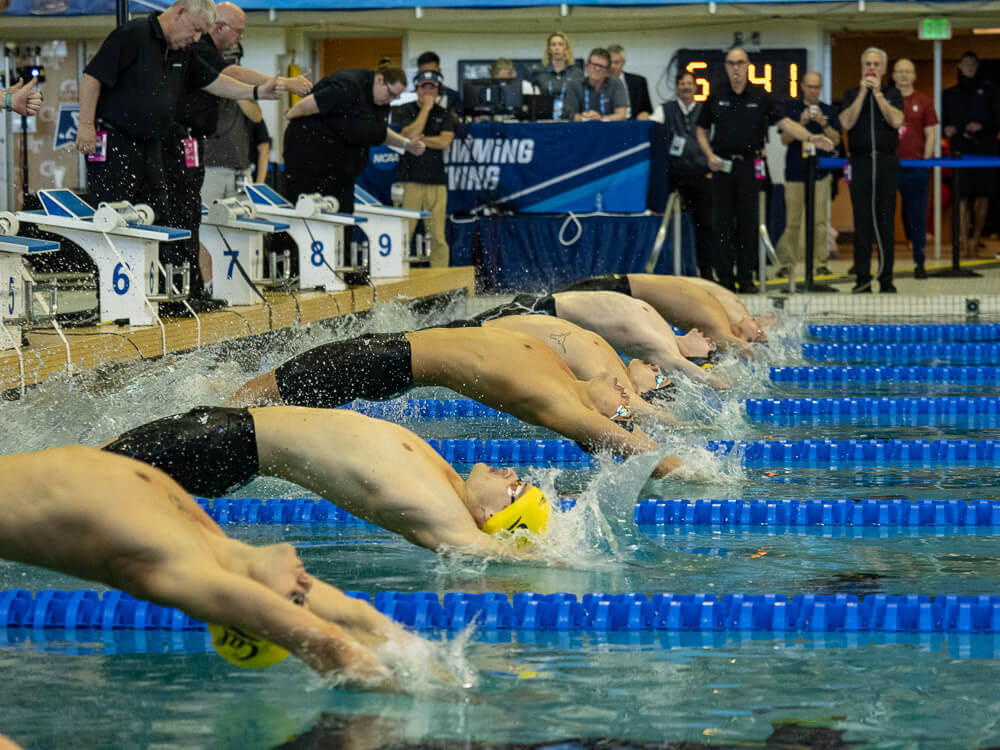What to Expect as a College Swimmer: A Guide for Recruits

What to Expect as a College Swimmer: A Guide for Recruits
As many high school sophomores begin speaking with college coaches and embark on their journey to collegiate swimming, there are a few things to keep in mind. College swimming is one of the most rewarding experiences in an athlete’s career. However, competing as a collegiate athlete comes with hard work, sacrifice, and time management.
Club swimming prepares athletes for the training aspect, but it doesn’t fully prepare them for the nuances of a college environment. Being part of a collegiate team means they are not just typical students at a university. While there are many perks and unique experiences that athletes get to be a part of, there are also responsibilities that come with representing a team, meeting academic expectations, and balancing a rigorous schedule.
Schedule
College is often described as the first time a young adult experiences freedom. While this can be true, the commitment to athletics somewhat reins in that freedom.
Each division varies in the number of required training hours, but in general, CARA hours (Countable Athletically Related Activities) have a certain limit. For example, Division I programs allow up to 20 hours per week of required training. Many teams follow this by labeling pool sessions as “required” and weight room sessions as “voluntary.” As a result, swimmers will often spend over 25 hours a week training, even if not all of that time is officially required.
Athletes planning to attend a Division I school should expect to attend all voluntary and mandatory sessions. A typical schedule can include up to 10 swims per week, three to four lifts, and dryland sessions.
Athletics departments may also require career-building events, team bonding activities, or informational meetings on topics like nutrition, sports psychology, alcohol, and safety. All of these “Required Athletically Related Activities” (RARA) are separate from CARA and have no weekly time limit.
It’s also important to note that during certain holidays and academic breaks—such as Thanksgiving, winter break, and spring break— swimmers often don’t get extended time off. Many are required to remain on campus for training or competition. For example, they may get about a week off during the winter break, but are still expected to train during that time.
Training
Training styles vary across programs. It’s encouraged to ask coaches about the structure for sprint, mid-distance, or distance groups. Some may reach upward of 6,000 yards per practice, focusing on aerobic work, while others might average 4,500 yards, prioritizing speed, power, and resistance training.
Fueling
College athletes are no longer walking in from practice to a home-cooked meal. They’re either responsible for fueling themselves or relying on campus dining halls. This change can present two common challenges. First, the abundance of new and often less nutritious food can lead to overindulging and a significant change in diet. On the other hand, some athletes may find themselves under-eating due to the busy schedule and increased training demands. Speaking with a nutritionist to develop a fueling plan can be highly beneficial.
Recovery
Luckily, collegiate programs often have access to recovery tools like ice baths, compression boots, massage therapy, and athletic training staff, all of which can help reduce fatigue, manage soreness, and prevent injury. These resources can have a significant positive impact on performance. At the same time, prioritizing restful sleep at night and incorporating naps during the day will further support recovery and overall athletic success.
Distractions
Roommates, the lack of parental oversight, Greek life, and a wide range of extracurriculars can easily distract students from their priorities on a busy college campus. Having a healthy balance is key. Being a student-athlete doesn’t require isolating oneself between every practice, but making smart choices around social events and campus activities is important. An athlete’s personal goals and commitment to the team should remain top priorities.
Recruiting
Recruiting is something that can make or break a program. Teams that prioritize recruiting fill certain weekends with activities to get to know the prospective athletes and show recruits a glimpse of the team culture and what it’s like to be on the team. This often includes attending football games, team practices, meals, campus tours, meetings, shopping for team apparel, or even taking commitment pictures.
Freshmen receive most of the responsibilities during these weekends, as they are the closest in age to the recruits, have just gone through the recruitment process, and can share their experiences of being on the team and living in the campus dorms. At some schools, freshmen might be expected to “host” recruits for five or more weekends throughout the year. These weekends leave little downtime, as hosts are typically responsible for spending the entire time with their recruit. This is where planning and prioritizing schoolwork early in the week becomes essential.
Final Thoughts
College swimming is a gratifying and fulfilling experience. It’s where many athletes make lifelong connections, grow as individuals, and compete in the sport they love at the highest level. Like any serious commitment, it’s important to understand what’s expected and ask the right questions before diving in. With the right mindset and preparation, this next chapter can be one of the most impactful and exciting seasons of an athlete’s life.
Adjusting to new coaches, training styles, and routines can take time, but these challenges often lead to some of the greatest growth, both in and out of the pool.



